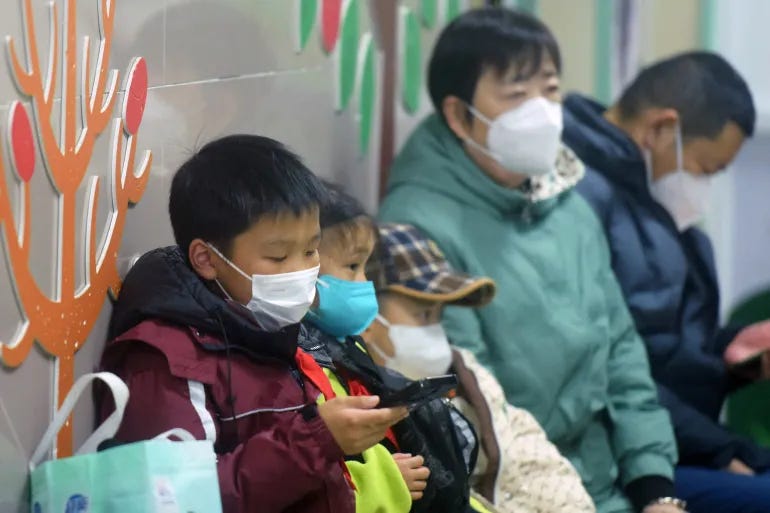HMPV: The Respiratory Virus Spreading in China and Beyond
Rising cases of human metapneumovirus (HMPV) in China, India, and the UK spark global health concerns.
A flu-like respiratory virus, human metapneumovirus (HMPV), has been rapidly spreading in China, primarily affecting children. The recent surge in infections has raised concerns, particularly in light of global health anxieties following the COVID-19 pandemic. Cases have also been reported in India and the United Kingdom as part of seasonal trends in respiratory illnesses.
Both the Chinese government and the World Health Organization (WHO) have attempted to ease public fears, assuring that HMPV is not new and generally causes mild illness. Here’s what we know about the virus, its transmission, symptoms, and risks.
What is HMPV?
HMPV is a common respiratory virus that causes cold and flu-like symptoms. Identified in the Netherlands in 2001, it is known to infect almost every child by the age of five. The virus primarily spreads in late winter and spring, similar to influenza and other respiratory infections.
Diagnosis involves laboratory testing of mucus samples from the nose or throat using RT-PCR or antigen tests.
How is HMPV Transmitted?
HMPV spreads through respiratory droplets when an infected person coughs, sneezes, or breathes. It can also be transmitted by touching contaminated surfaces and then touching the face (eyes, nose, or mouth), similar to the transmission of common colds and flu.
What Are the Symptoms of HMPV?
Symptoms typically appear within three to six days of exposure and include:
Cough
Fever
Nasal congestion
Wheezing
Shortness of breath
Sore throat
Most cases are mild and resolve within a week. However, severe infections can lead to complications such as bronchitis or pneumonia, particularly in infants, older adults, and immunocompromised individuals.
Where Are HMPV Cases Rising?
China has reported an increase in HMPV cases, particularly among children under 14. The surge aligns with the colder months when respiratory illnesses are more common. In response, the country has launched a monitoring system for pneumonia of unknown origin.
In India, seven cases have been confirmed in states such as Karnataka, Gujarat, Maharashtra, and Tamil Nadu. The government has urged citizens to follow hygiene measures but reassured that the virus is not cause for alarm.
The UK has also reported an uptick in HMPV cases. Between December 23 and 29, about 4.5% of lab-tested respiratory illness samples were positive for HMPV, compared to 29.5% for influenza and 2.5% for COVID-19.
Is HMPV Dangerous?
HMPV is highly contagious but generally not life-threatening for healthy individuals. The WHO has emphasized that it is a well-known seasonal virus with a low mortality rate. Most infections resemble the common cold or flu and resolve on their own within a week.
However, high-risk individuals, including young children, older adults, and those with weakened immune systems, may develop severe complications requiring hospitalization.
How is HMPV Treated?
There is no specific antiviral treatment or vaccine for HMPV. Supportive care focuses on managing symptoms, such as:
Staying hydrated
Resting
Using oxygen therapy in severe cases
What’s Next?
Global health authorities continue monitoring the virus, though experts emphasize that HMPV is not a new or emerging health threat. Officials advise the public to follow standard precautions, such as hand hygiene, avoiding close contact with sick individuals, and seeking medical attention for severe respiratory symptoms.
As seasonal respiratory infections surge worldwide, vigilance and proper hygiene remain key in preventing the spread of HMPV and similar illnesses.


